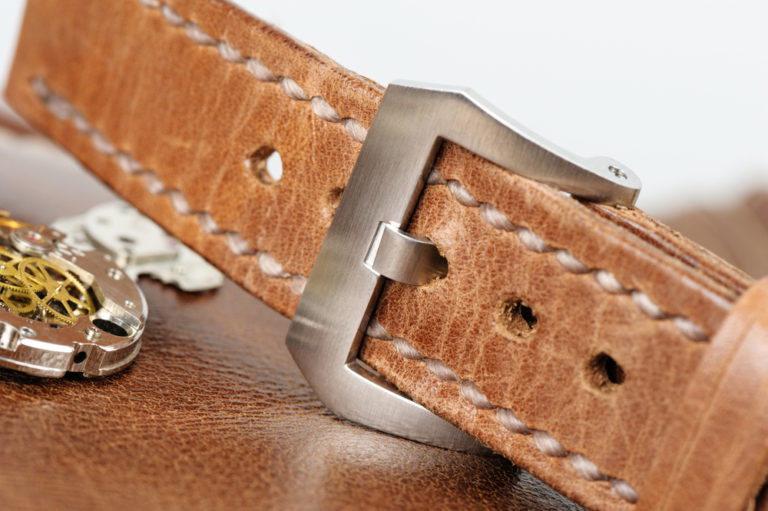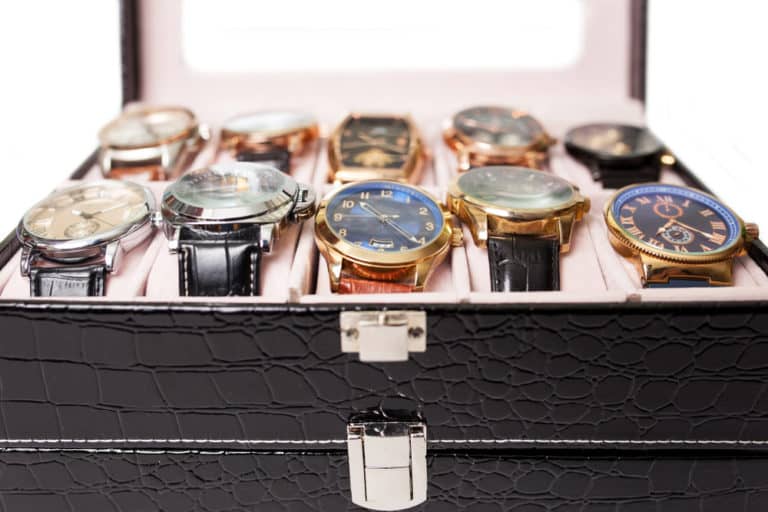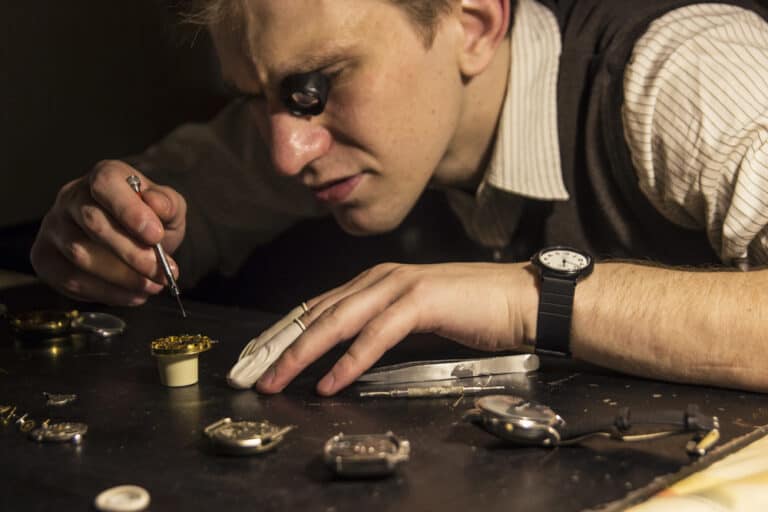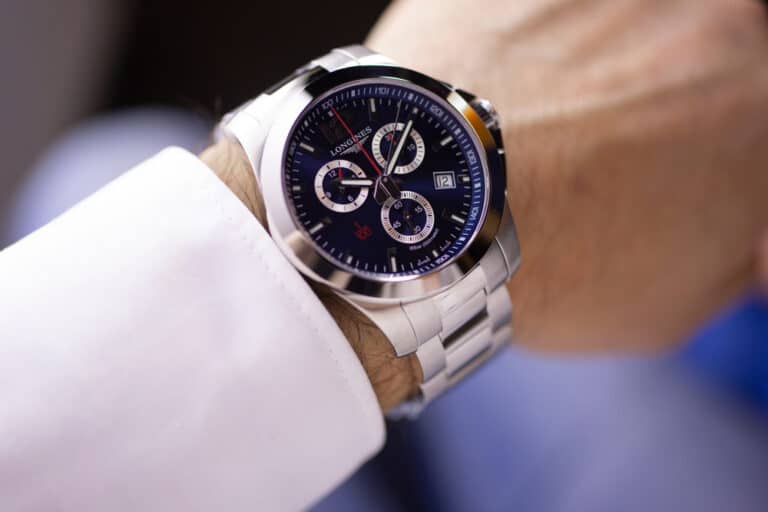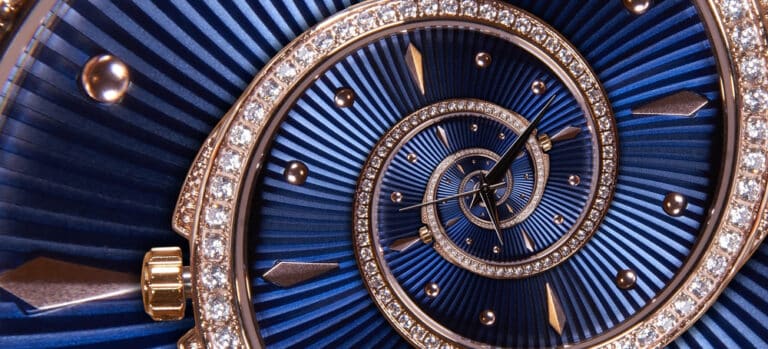As the name suggests, the original pilot watch’s purpose was to accommodate pilots’ needs. A vital tool in the 1900s and now a statement piece, some of the most iconic pilot watches still bear the original features intended for aviation purposes.
Initially, the rivets on many pilot watches ensured that the strap was firmly attached to the watch and didn’t slide or fly off the pilot’s wrist. In modern pilot watch straps, the rivets are strictly decorative, paying homage to the straps of the old pilot watches.
Rivets on a pilot watch strap were just one of many unique design features that answered a practical need. Today, it adds to the watch’s aesthetics and remains popular among mass consumers, not just pilots. Each brand has its vision of what a pilot’s watch should be, depending on the wearer’s needs. However, some key elements single these watches out from the crowd.
Characteristics Unique To A Pilot Watch
To understand some of the other unique elements of a pilot watch, besides the rivets on the straps, you must first know why the need for a pilot watch arose in the first place.
Imagine flying a plane in the 19th century and having to reach into your coat pocket to take out your watch every time you needed to see what time it was. Add gloved hands and a small watch face to the mix, and you might have some difficulty managing the cockpit while estimating the time midflight.
No wonder pilots needed an alternative instrument to pocket watches.
In 1904, Louis Cartier answered pilots’ prayers by designing the first wristwatch for the Brazilian aviator, Alberto Santos-Dumont, to easily time his flights. Soon after, Zenith developed the concept further to include more features that accommodated aviation professionals, making them the pioneers in manufacturing the first official pilot watches.
Since then, other famous brands like Longines, Breitling, Omega, IWC, and B-Uhr have played a significant role in the evolution of the pilot watch and its unique features. These traits are still present in modern-day pilot watches, including large-size dials and crowns, luminous indexes, multifunctional bezels, Faraday cages, and dual time or GMT functionality.
Why Are Pilot Watches So Big?
The face or dial of a pilot watch used to be relatively large compared to other types of watches, reaching between 55-60mm in diameter. The large dial needed to accommodate the larger font size of the numerals so that pilots could read the time quickly and efficiently when flying in all conditions, including bad weather and night flights.
Modern pilot watch designs do not always incorporate these large dimensions. Although bearing other characteristics similar to the original design, pilot watches today come in varying sizes between 40-50mm.
Highly Legible Displays Of Pilot Watches
Pilots often had to fly in turbulent weather while stationed in a dark cockpit at night. Working in this environment required them to be able to read the time quickly and easily. As a result, the dials of pilot watches had to increase legibility in dark surroundings by having contrasting colors, luminous features, and an orientation triangle.
Pilot watches were usually manufactured with darker dials and contrasting color indexes and details to make it easier to read the time. For example, a typical pilot watch would have a black dial with white numerals and minute- and hour arms.
Luminosity was another selling point that made the pilot watch so effective. Luminous hands and numbers on the dial made it much easier to read in dark surroundings, ensuring the pilots’ safety. These watches were one of the first styles ever to use glow-in-the-dark technology.
The original pilot watches used radioactive elements to achieve this luminosity. Modern pilot watches, however, use safer methods to achieve the same effect.
Finally, the orientation triangle was one more design detail on the dial that allowed pilots to tell the time quickly. The triangle symbol replaced the digits at the 12 o’clock mark to help pilots figure out the upright orientation of the dial and thus read the time immediately.
Why Do Pilot Watches Have An Oversized Crown?
Historically, pilots flew in unheated cockpits and had to wear thick gloves during flight to keep their hands warm. An oversized crown on a pilot watch made it easier for the pilots to manipulate and operate the watch without having to take off their gloves.
Most pilot watches were, and still are, equipped with oversized crowns, either round (onion design) or conical (diamond design.)
Pilot Watch Bezel Characteristics
A pilot watch bezel (i.e., the ring that encircles the crystal glass to secure it in place) had more markings than the average watch and had slide rule functionality.
A slide rule bezel is often referred to as an analog computer because of its ability to make inflight calculations without any electronics. The slide rule works with two scales on the pilot watch: the outer rim, which can rotate, and the second, fixed scale on the inner edge.
This rotating bezel and logarithmic scale, commonly used in Breitling watches, were designed to make pilot-appropriate calculations, like determining fuel consumption, speed, distance, flight time, and unit conversions.
The Protective Cage Of A Pilot Watch
Mechanical watches in the 1900s could not endure magnetic field exposure like that found in a cockpit environment. The older pilot watches, therefore, were made with a Faraday cage: an inner cage made from soft iron that conducts magnetic interference away from the watch’s movement to ensure reliable timekeeping.
Do Pilot Watches Have Dual Time or GMT Functions?
A feature of more modern pilot watches is dual time or GMT functions that track multiple time zones. This function is helpful for pilots or anyone traveling across different time zones. Pilot watches with this feature often have the GMT showing as an additional hour hand rotating on a 24-hour scale, with the bezel in two different colors to show night and day.

Conclusion
The pilot watch has seen many innovations over the years to make the work of a pilot easier. Since the 1900s, however, technological advances in the aviation industry have reduced the need for some of these features. Yet, the pilot watch is still popular because of its aesthetics and legibility.
Even though there is no set combination of features that a watch must have to be called a ‘pilot watch,’ each brand has its approach and creative interpretation of what such a watch should look like or be able to do. That said, certain vital elements in a pilot watch were born from the need to be able to scan time and operate the instrument efficiently. This purpose-driven design will live forth for decades to come.

